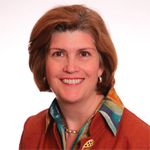
The 2006 meeting of the American College of Rheumatology was the biggest in history and most certainly the best. The clinical and basic research was spectacular. The attendance topped 12,000 people. Importantly, attendees journeyed from all over the world to Washington, D.C., to speak and to learn. In its spirit and variety, this conclave attested to the globalization of rheumatology and its vibrancy on every continent.
Adding to the excitement of the meeting was the striking new Washington Convention Center. The building is beautiful—if not cavernous—and sits at the center of an area that had once been one of the most rundown and dangerous places in the district. At a museum I visited, a pleasant and solicitous docent politely described the area as having been “seedy.” Economic growth and visionary civic leadership have transformed a site of desolation and decay to a modern nexus of commerce and culture.
While I can marvel at all the whiz-bang of modern electronic communication, I am also somewhat saddened. As instant messaging has boomed, the time for conversation has dwindled.
New Voice for Rheumatology
For me, the meeting had special significance because of the launch The Rheumatologist (TR), the new publication for which I have the privilege and honor of serving as the first editor. By all indications, the launch of TR was a great success. TR has a terrific look and congratulations go to the Wiley team for designing a publication that is so attractive and appealing in its appearance. Congratulations also go to the leadership of the ACR in fostering the creation of a newsmagazine to promote communication in the organization.
While I am still high from TR’s debut, Volume 1, Issue 1 of any publication elicits a strange mix of feelings. It is a culmination of planning and arduous effort enveloped in anxiety and trepidation. As the magazine rolls off the presses and you grasp it in your hands, pride, delight, and relief surge simultaneously. That first issue is a milestone and a cause of celebration but, as the bubbles of champagne stream joyously to the top of the glass, reality hits home as the deadline for the next issue looms and two articles are already late.
In any artistic endeavor, like editing a magazine, there is a bit of a Sisyphean travail. The difference is that, with art, pushing the stone to the top of the mountain is as exhilarating as it is exhausting and, once at the summit, the view is great. Until the stone plunges back to the bottom of the slope, you can savor the smart writing and brilliant color shining on every glossy page.
